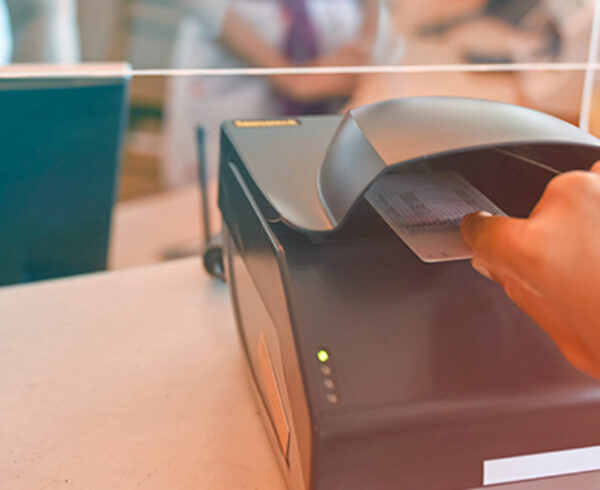When traveling, you have to stay connected. Unfortunately, relying on a personal phone plan can leave you high and dry. To ensure you never miss a call or text (and won’t pay exorbitant fees either), consider these international phone plans.
International phone plans are a boon for business travel. They allow you to stay connected with both your team back home and your family. You never miss a beat while you’re on the go. You also enjoy a greater sense of safety, knowing you’re connected no matter how far afield you’ve traveled.
Here’s what you need to know about international phone plans to make the best purchase for your needs.

eSIM Cards vs. International Phone Plans
First things first, let’s discuss eSIM cards and international phone plans and how the two differ.
You’re probably familiar with SIM cards. Maybe you’ve removed a SIM card from an old phone and transferred it to a new phone in the past, to transfer over your data and other information to a new device.
So, what’s an eSIM?
An eSIM comes permanently installed on your phone. It is entirely digital, so you can’t swap it out like a physical SIM card. However, this makes an eSIM card incredibly powerful. Because the eSIM is digital, you can install multiple eSIM plans on your phone at once.
As such, if you’re traveling to a foreign country and want to use your personal device just like you would at home, all you have to do is buy a data plan in your destination country and then install the eSIM data plan. From there, you can use the phone as normal (though, depending on where you’re at and your data plan provider, you may or may not be able to make calls).
Do note that not all phones and devices are eSIM compatible. iPhones that are eSIM compatible include the iPhone XR, XS, XS Max, SE 2, SE 3, and all iPhones 11 through 15. Samsung phones that are eSIM compatible include the Samsung Galaxy S20 through S23, plus the Note, Fold, Z Fold, and Z Flip series.
How many eSIM plans you can install on your phone at one time will differ according to the phone. Additionally, your device may not be eSIM compatible if you live in certain countries.
You can find a full list of compatible phones as of late 2023, along with conditions and exceptions, here.

What About Traditional SIM Cards?
There are instances where it makes sense to use a traditional SIM card when traveling internationally versus an eSIM.
For example, if you want to primarily make calls and send texts, and you’re not as worried about data, a SIM might be a more cost-effective option. You can purchase a local or regional (or international if you plan on crossing international borders during your trip) SIM card at the airport. To use a new SIM card in your existing phone, your phone must be unlocked (which can usually be done online). Some phones can only be unlocked once they’ve been completely paid for via your plan or purchased outright.
Best eSIM Data Plan Providers
So, who’s your best pick for an eSIM data plan?
Favorites include Airalo, which serves more than 200 countries. The service is quick and easy to use. All you have to do is download an app, choose your destination and package, and then install and activate the eSIM. You get instant connectivity, and the package is entirely prepaid, so you won’t be surprised by any extra fees or charges at the end of your trip.
Another favorite is Holafly, which is likewise easily installed in just a few minutes. Once you land at your destination, the eSIM will immediately begin working for seamless connectivity without missing a beat.
Best International Phone Plans
Of course, an international phone plan also comes with its perks. If you choose a daily phone plan that comes with international service, there’s no need for you to download anything new or change anything about the way you use your devices, when you leave your home country. Once you turn your phone off of airplane mode and land, you’ll be instantly connected to service. However, some international phone plans are better than others.
T-Mobile
For U.S. Travelers, T-Mobile offers some of the most affordable plans with international service. The most expensive plan is $90 per month and comes with free high-speed data and texting in more than 200 countries. For even faster connectivity, users can purchase additional international passes, starting at $5 per day.
Unfortunately, T-Mobile does charge a hefty fee for international calls — $0.25/minute.
Google Fi
Google Fi comes with similar fees for international calling ($0.20/minute). However, it does come with much more affordable fees for unlimited data and texting, at $65 per month.
AT&T’s International Day Pass
If you absolutely need to make voice calls while traveling abroad and you don’t want to rely on Wi-Fi or apps that use data, you may want to see if your current service provider offers an international day pass that includes voice calls. AT&T, for example, offers day passes for $10 per day, with unlimited high-speed data, talk, and text.
Verizon
Verizon offers several different international plans.
The Verizon TravelPass gives you unlimited talk, text, and data in more than 200 countries, for $10 per day. Do note that while the TravelPass is advertised as “unlimited,” data is bumped down to 3G after your first 2GB of data use each day, and your Verizon plan must qualify for a Verizon TravelPass in order for these terms to apply. (In other words, read the fine print!)
If you need something that will last a little longer, an international monthly plan offers the same coverage area, with 250 minutes of talk, unlimited texts and unlimited data, with similar usage limitations included, for $100 per line per month.
Uniquely, Verizon also offers a monthly data plan and pay-as-you-go text and talk offerings for use on select airlines, in-flight, as well as for use on cruise ships.

Not Happy with Any of the Above Options?
If you don’t want to use your existing cell phone plan’s international option and you don’t want to purchase a new eSIM or SIM, you may be restricted to only using your devices when you’re on Wi-Fi. While this is doable in some situations (for example, say if you’re spending most of your time at the airport, conference center, and hotel), it’s not ideal. For the safest business trip possible, consider one of the above international phone plans—and always use a secure Wi-Fi network!
Need More International Business Travel Tips?
JTB Business Travel isn’t just your one-stop shop for all things business travel management. Our resource center provides all the tips, tools, and expertise you need to navigate your next business trip with success. From tips on how to sleep on the plane to advice on how to get fresh-baked foods through airport security, check out our blog for more.













